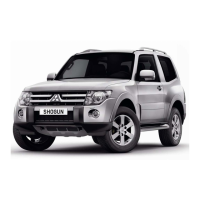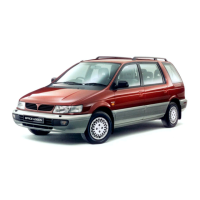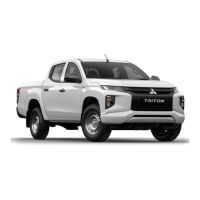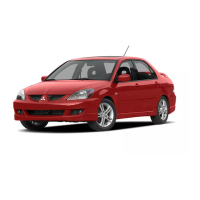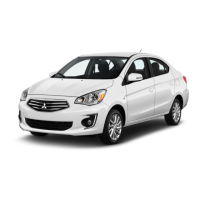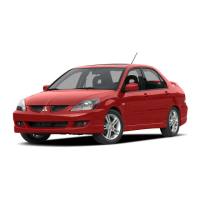Locking and unlocking Page: 19 Keys Explains the function and types of vehicle keys, including warnings and notes.
Keyless entry system* Explains how to use the keyless entry system for locking, unlocking, and mirror operation.
Doors Details how to replace the battery in the remote control switch for the keyless entry system.
Central door locks Explains how to lock/unlock doors from inside and outside the vehicle, including driver's door operation.
Security alarm system* Describes the system's purpose, activation conditions, and precautions for modification.
Electric window control Explains how the alarm is activated and how to cancel it, along with electric window operation.
Sunroof* Explains how to operate the sunroof, including tilt up, open, and close functions, with warnings.
Seat and seat belts Page: 41 Seats Details the front seats, including adjustments for forward/backward, recline, cushion height, lumbar support, armrest, and heated seats.
Seat arrangement Explains how to select desired seat arrangements for 3-door and 5-door models, including normal usage and flat seat configurations.
Seat adjustment Provides guidance on adjusting the driver's seat for comfort, safety, and clear vision, including warnings.
Seat belts Explains how to wear seat belts correctly and refers to pretensioner systems.
Child restraint Discusses the importance of using child restraint systems according to child size and relevant regulations.
Starting and driving Page: 139 Economical driving Provides technical requirements and driving habits for low fuel consumption and vehicle longevity.
Safe driving techniques Provides general advice on driving safety and protection against injury, emphasizing seat belts and child restraints.
Running-in recommendations Advises precautions for the first 1,000 km to ensure long life, economy, and performance, including speed limits.
Parking brake Explains how to apply and release the parking brake, with cautions and notes on its function.
Inside rear-view mirror Explains how to adjust the vertical and horizontal positions of the inside rear-view mirror for optimal view and glare reduction.
Outside rear-view mirrors Describes automatic glare reduction for bright headlamps, compound curved-surface mirrors, and how to adjust mirror positions, with warnings.
Ignition switch Explains the different ignition switch positions (LOCK, ACC, ON, START) and their functions, including notes on the electronic immobilizer.
Steering wheel lock Explains how to lock and unlock the steering wheel and provides cautions about removing the key.
Starting Offers tips for starting the engine, including warnings about enclosed spaces and cautions on starting methods.
Super select 4WD II (SS4 II) Explains how to shift the transfer shift lever for different drive modes (2H, 4H, 4HLc) and the corresponding indication lamps.
Rear differential lock* Explains how to operate the rear differential lock switch, its cautions, notes on indicator lamps, and when it operates.
4-wheel drive operation Explains how 4-wheel drive works, driving on dry paved roads, and driving on snowy or icy roads, with notes and cautions.
Braking Details power brakes, brake system, warning lamp, and precautions for braking habits.
Power steering system Explains how the power steering system operates, its capabilities, and warnings about stopping the engine while moving.
Cruise control* Explains cruise control system, its activation speed, cautions for unsafe conditions, and cruise control switches.
Reversing sensor system* Details how to change tyre ID sets for TPMS and explains the reversing sensor system operation and its components.
Rear-view camera* Details changing detection areas for the reversing sensor system and explains the "SONAR OFF" indication lamp.
Cargo loads Explains cargo load precautions, loading a roof carrier, and roof carrier mounting brackets.
Trailer towing Explains the importance of consulting MITSUBISHI MOTORS for trailer towing device mounting and regulations, with cautions and maximum weight limits.
For pleasant driving Page: 203 Ventilators Explains front and rear ventilators, and how to adjust air flow and direction.
LW/MW/FM radio/CD player* Explains the usage of the audio system, notes on phone interference, and important points on usage and cleaning discs.
Operation Keys Explains how to turn the power ON/OFF for the audio system.
Listen to Radio Explains how to listen to FM, MW, and LW radio broadcasts, including manual/seek station selection and auto memory.
Listen to CDs Details playing CDs, selecting tracks, fast forward/rewind, and switch playback mode.
Listen to MP3s Explains how to listen to MP3s, including switch playback mode, repeat playback, random playback, and scan playback.
Use AUX* Explains how to use AUX input for external audio devices, including cautions and notes on auxiliary video connector.
Display Indicator Explains the content of the display indicator and how to change the display mode, with cautions and notes on DAB reception.
System Settings Explains how to change system settings like product time, DAB settings, and Gracenote DB version.
Troubleshooting Provides a troubleshooting table for CD, USB, and iPod errors, listing messages, causes, and responses.
For emergencies Page: 293 If the vehicle breaks down Provides advice for vehicle breakdowns on the road, including using hazard flashers and warning triangles.
Emergency starting Details the procedure for starting the engine using jumper cables, including warnings and cautions.
Engine overheating Explains how to identify engine overheating, check for steam, and take corrective measures, including warnings about opening the bonnet.
Tool, jack and jack handle Details the storage location of the tool, jack, and jack handle for 3-door and 5-door models, and explains the wheel nut wrench.
How to change a tyre Provides instructions on how to change a tyre, including parking, hazard warnings, and preventing vehicle rolling with chocks.
Towing Explains when towing is necessary, cautions about tow truck equipment, and transfer shift lever positions for towing.
Maintenance Page: 319 Service precautions Provides general advice for vehicle care, periodic inspections, and cautions for working in the engine compartment.
Engine oil Explains how to check and refill engine oil, its importance for performance, and selection criteria for engine oil.
Engine coolant Explains checking and adding engine coolant, its importance, and warnings about opening the radiator cap when hot.
Fuses Details the passenger compartment fuse location and table, including notes on spare fuses and capacities.
Replacement of lamp bulbs Explains how to replace lamp bulbs, including cautions about hot bulbs, LED bulbs, and notes on cleaning lenses.
Specifications Page: 351 Vehicle labeling Explains the vehicle identification number and vehicle information code plate, and how to use them for ordering parts.
Vehicle dimensions Provides diagrams illustrating vehicle dimensions for 3-door and 5-door models.
Vehicle performance Lists vehicle performance data, including maximum speed and climbing ability.
Engine specifications Details engine specifications, including model, cylinders, displacement, bore, stroke, camshaft, mixture preparation, maximum output, and maximum torque.
Refill capacities Lists refill capacities for engine oil, automatic transmission fluid, and their recommended lubricants.


